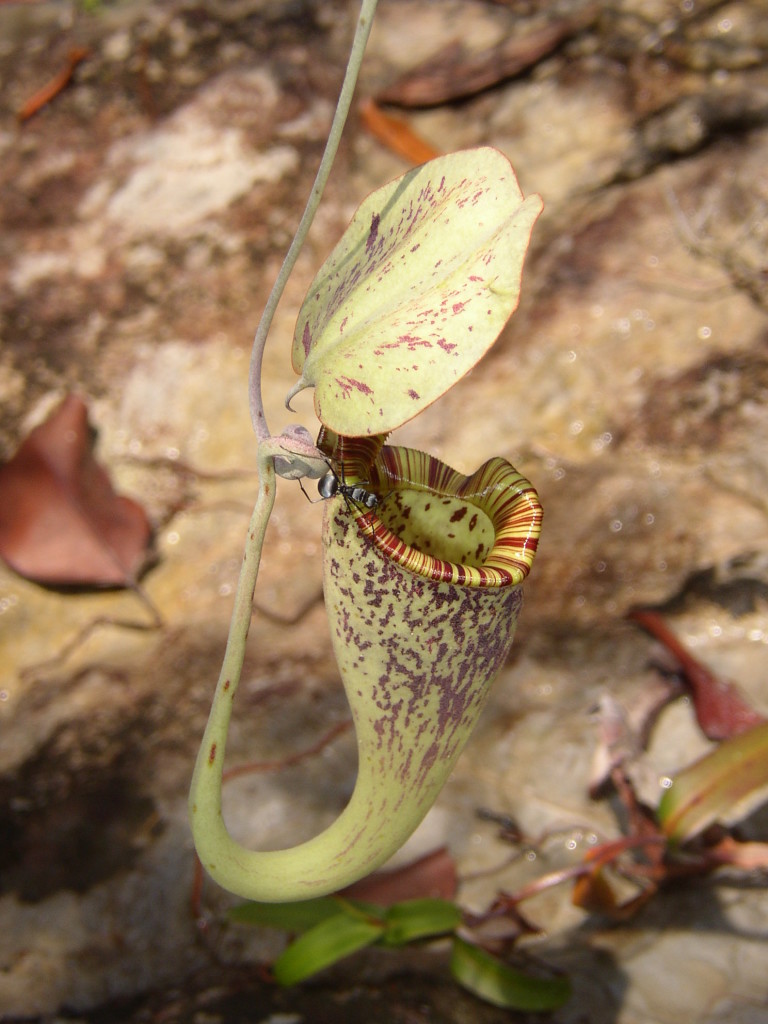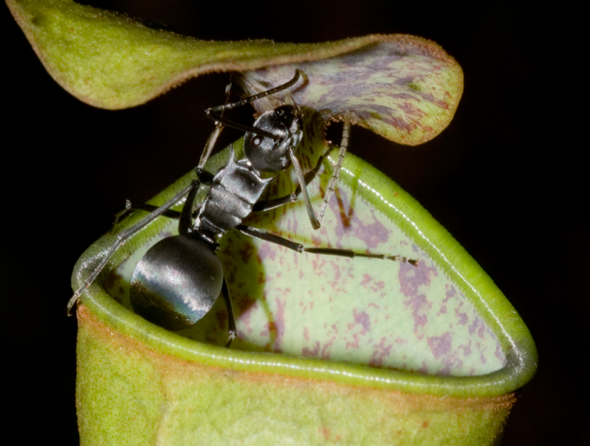Not a lot of Mother Nature’s deadly killers are always out for blood. Some of them take a breather once in a while to give few lucky preys a chance to live a longer and fruitful life, or at least until the next predator finds them.
One of these killers is the Raffles pitcher plant. According to experts, the Nepenthes rafflesiana, as the plant is scientifically called, only traps insects at certain seasons, making them a part-time killer, which, admittedly, does not make them less menacing. The plant’s primary weapon is the rim of the pitcher that becomes slick when humidity is high. Any poor insect that happens to be just passing by or drawn by curiosity can easily slip into a pool of fluid that digests it.
During the hottest part of the day, however, the rim dries out, which is the perfect time for insects to stop and smell the flower so to speak. Because then, the rim is dry instead of slippery. This allows ants to collect nectar from inside the Raffles plant. This doesn’t mean, though, that insects are 100% safe, especially ants.
Scientists conducted a field experiment where they used a sugar solution to continuously wet the rim of the pitcher, while leaving others alone. Those pitchers that did not get the sugary treatment captured more ants than those that should have been slippery and wet. Why, you ask? This is because one ant that safely forages for food would return to their nest and then invite the rest of the colony to follow its lead, not knowing that the condition of the rim could change at any time. As it turns out, a majority of them are marching to their wet deaths.
The Raffles pitcher plant is a beauty to behold, both for humans and insects. But the insects that fail to resist it are likely to meet their untimely demise when conditions run from dry to humid and back again.






